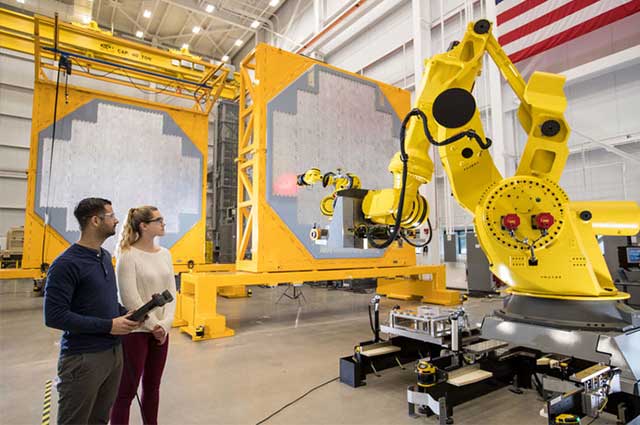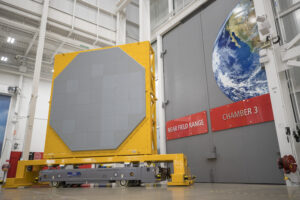
SPY-6 is the U.S. Navy family of radars that perform air and missile defense on seven classes of ships.
WASHINGTON: In the coming weeks, the Navy is slated to unveil a new plan for what ships plans to put to sea in the coming decades, and how it wants those hulls configured. One of the “must haves” in the emerging era of small drones, ballistic missiles, stealthy aircraft and unmanned ships is the ability to see further and react faster, as countries from China to Iran to North Korea throw a dizzying array of advanced weapons into the mix.
In November, the Navy laid down the keel for its first Flight III destroyer, one of the ships at the forefront of this modernization plan. The USS Jack H. Lucas will take to sea armed with new weapons, advanced sensors and a more powerful AN/SPY-6 radar system that can see three times further than previous radars.
The Raytheon-made system is capable of tracking incoming missiles, small drones and ships at distances, and at a volume, that existing radars can’t, the Navy and company representatives say.

SPY-6 in production at Raytheon’s Radar Development Facility in Andover, MA.
The new SPY-6 will also be installed on the USS Bougainville, a new America-class amphibious assault ship slated to head to sea in 2024, and the USS John F. Kennedy, the second Ford-class aircraft carrier which was christened in December.
Scott Spence, Raytheon’s Senior Director of Naval Radar Systems says that the new SPY-6 the company is putting on these ships is modular, so they’ll be upgradable through software upgrades, allowing ships of multiple classes to receive new versions and technology upgrades relatively easily and regularly throughout their decades in the fleet.
“It is a true air and missile defense radar,” Spence said. It simultaneously does both the anti-air mission as well as the ballistic missile mission “so it can track incoming ballistic missiles at the same time as looking at low-flying cruise missiles, at the same time as tracking aircraft and providing all that information to the combat management system.”
Crews won’t have to shut down one function of the radar in order to perform another function, and they’ll be able to interface with the system installed on other ships, giving commanders a vastly expanded field of vision. That’s a critical capability when operating across the vast expanse of the Pacific as China adds dozens of ships to its fleet, and as the Navy operates in the Arctic more regularly, putting hundreds or thousands of miles between ships in the North Atlantic.
The newest version of the radar, AN/SPY-6(V)1 completed its final round of developmental testing last February, having successfully tracked its 15th ballistic missile target.
The SPY-6 radar is a key part of the Navy’s Aegis system’s latest upgrade, Baseline 10, which will be installed on all Flight III destroyers.
While the Navy waits for those ships and their new radar systems, some military leaders want the system now. Last March, Indo-Pacific Command commander Adm. Phil Davidson sent a letter to Capitol Hill asking to “accelerate the modernization of the Aegis DDG fleet with solid-state (AN/SPY-6) air search radars, to compete against the advanced threat of hypersonic and ballistic missiles.”
Raytheon says it can backfit the SPY-6 system on to current Flight IIA destroyers, and given that military officials like Adm. Davidson are advocating for the new SPY-6 capability now to meet the emerging challenge of China and North Korea, Spence said “we’re looking to get on contract for the backfit ships, right now the plan would be to get on contract in FY21,” though plans are still in the works.

The Flight IIA destroyers currently in the fleet aren’t able to accommodate the 37 radar modular assemblies that make up the full SPY-6 — each consisting of 2x2x2 boxes. The current destroyers can accept 24 RMAs, due to power and space constraints. But the smaller configuration can still provide a whopping 30-fold increase in sensitivity, allowing the ships to detect and track everything from small drones to ballistic missiles.
As it stands, the Navy plans to begin equipping 15 Flight IIA destroyers with the 24-module variant of the radar, with first delivery occurring in 2024.























